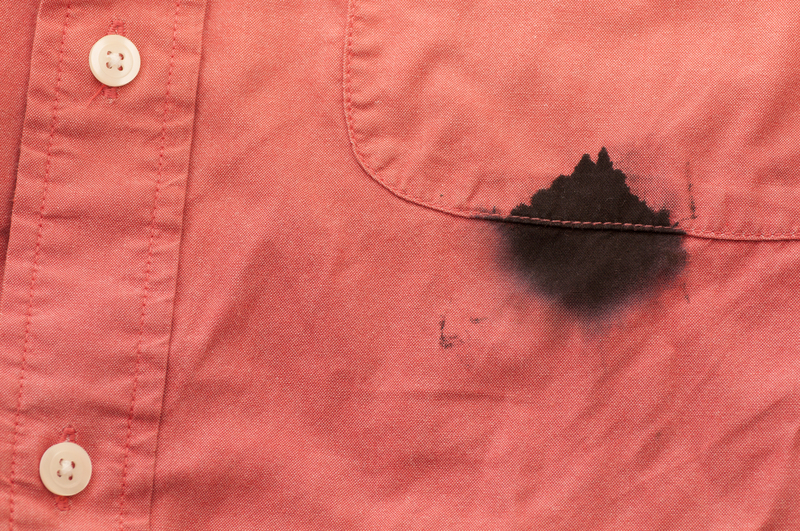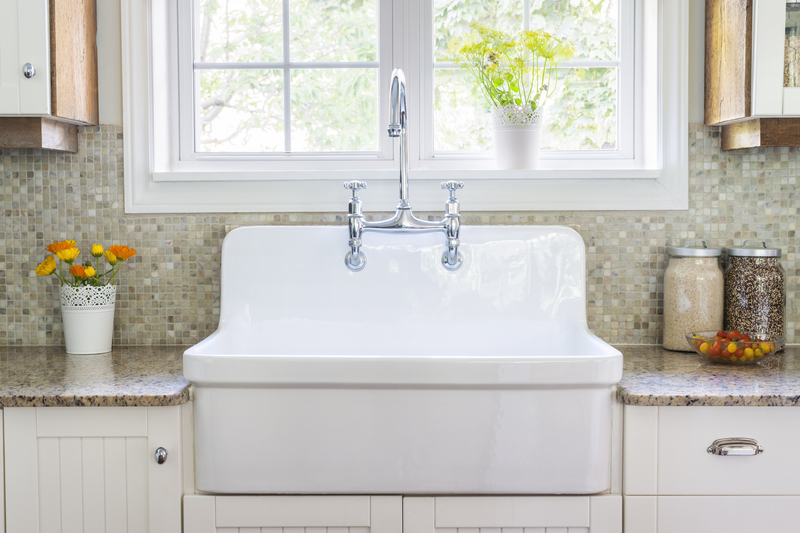Essential Ways to Make Your Stovetop Sparkle Without Burnt-On Remains
Posted on 14/08/2025
Essential Ways to Make Your Stovetop Sparkle Without Burnt-On Remains
Is your kitchen losing its sheen because your stovetop is plagued by stubborn, burnt-on residues? Maintaining a sparkling clean stovetop not only keeps your cooking area inviting but also extends the lifespan of your appliance. This comprehensive guide will walk you through essential tips and tricks to achieve a spotless cooktop--all without those pesky, burnt-on remains that seem impossible to remove. Whether you have a gas, electric, or glass stovetop, here's everything you need to know to make your stovetop sparkle like new!
Why a Sparkling Stovetop Matters
A sparkling stovetop isn't just about aesthetics. Cooking on a clean surface can significantly improve your meals' flavor, prevent cross-contamination, and reduce the risk of fire hazards. Plus, regular maintenance ensures that dirt and grease don't build up over time, making future cleaning much easier.
- Better hygiene: Prevents bacteria and mold growth.
- Safer environment: Reduces fire risk from grease buildup.
- Longer appliance life: Keeps burners and surfaces functioning optimally.
- Enhanced aesthetics: Makes your kitchen look neat and welcoming.

Understanding Different Types of Stovetops
To effectively remove burnt-on remains from your stovetop, it's important to identify your cooktop type, as the ideal cleaning method varies. The most common stovetops are:
Gas Stovetops
- Feature removable grates and burners
- Prone to grease and food debris under grates
Electric Coil Stovetops
- Have coil-style burners which can be lifted
- Pans can accumulate drips and spills
Glass or Ceramic Stovetops
- Flat cooking surface--sleek but sensitive to abrasives
- Visible burnt-on stains can be stubborn
Each cooktop type comes with unique cleaning demands. Using the wrong technique or products could scratch the surface or damage components.
Essential Cleaning Tools and Supplies
Arming yourself with the right cleaning tools is the first step to a sparkling stovetop. Here's what you should have on hand:
- Soft microfiber cloths
- Non-abrasive sponges
- Baking soda
- White vinegar
- Dish soap
- Plastic or silicone scraper
- Spray bottle
- Old toothbrush or brush with soft bristles
- Paper towels
- Commercial stovetop cleaner (optional, for tough jobs)
Tip: Always check your manufacturer's recommendations for cleaning agents and tools.
Step-by-Step: How to Clean Your Stovetop Without Burnt-On Remains
Here's an easy-to-follow, step-by-step approach for each type of stovetop to ensure you remove all burnt-on leftover food and restore that fresh-from-the-showroom shine:
1. Gas Stovetop Deep Clean
-
Turn Off and Cool Down:
Always ensure all knobs are off and the stove is completely cool before cleaning. -
Remove Grates and Burners:
Take off grates and removable burner parts. Soak them in a mixture of warm, soapy water for 15-20 minutes. -
Wipe the Surface:
Use a damp sponge with dish soap to wipe away loose debris and grease from the stovetop. -
Spot Treat Burnt-On Remains:
Sprinkle baking soda on stubborn spots. Dampen with a vinegar spray (mix equal parts vinegar and water in a spray bottle). Allow it to fizz for 10 minutes, then gently scrub with a non-abrasive sponge or an old toothbrush. -
Scrape If Needed:
For persistent burnt-on stains, use a plastic scraper to lift away residue gently. Never use metal scrapers as they can scratch the surface. -
Rinse and Dry:
Wipe everything with a damp microfiber cloth, then dry completely with a paper towel. -
Clean Grates and Burners:
Scrub soaked grates with a brush, rinse, and thoroughly dry before reassembling.
2. Electric Coil Stovetop Cleaning
-
Ensure Safety:
Unplug or turn off the stove at the circuit breaker before cleaning. -
Remove Coils:
Lift and gently disconnect the coils (consult your user manual). -
Treat Drip Pans:
Remove and soak drip pans in hot, soapy water. Scrub with a brush after 15 minutes. -
Wipe Surface:
Wash the main stovetop surface with soapy water. For burnt-on spots, apply a baking soda paste and let it rest for 10-15 minutes before scrubbing gently. -
Reassemble:
Ensure all components are completely dry before reinstalling the coils and drip pans.
3. Glass and Ceramic Stovetop Cleaning
-
Wait Until Cool:
Never clean a hot glass stove. Wait for it to cool to prevent burns. -
Wipe with Damp Cloth:
Remove loose crumbs and grease using a soft, damp microfiber cloth. -
Handle Stubborn Residue with a Paste:
Mix baking soda and a little water to form a thick paste. Spread over burnt-on remains. -
Soak the Stain:
Lay a damp towel over the paste and let it sit for 15-30 minutes for deep penetration. -
Wipe Clean:
Use a non-abrasive sponge to gently scrub away the loosened debris. -
Final Polish:
Spray with a light vinegar solution and buff with a dry microfiber towel for added shine.
Pro Tip: Special glass cooktop cleaners can provide an extra gleam and protection, but avoid abrasive powders or pads that may scratch the surface.
Homemade Cleaning Solutions That Work Wonders
Natural cleaning solutions can effectively tackle even the toughest burnt-on remains, all while being eco-friendly and wallet-friendly. Here are the best diy mixtures for a sparkling clean stovetop:
Baking Soda & Vinegar Magic
- Mix 2 parts baking soda with 1 part water to form a paste.
- Spread on stains, spray with vinegar, and allow to fizz before wiping away.
Lemon as a Natural Degreaser
- Cut a lemon in half and rub over greasy areas.
- The acidity breaks down grime and leaves a fresh scent.
Hydrogen Peroxide Boost
- For extreme cases, mix hydrogen peroxide with baking soda to break down heavily burnt-on remains.
Salt & Baking Soda Scrub
- Mix equal parts for added scrubbing power on tough spots.
Always test in an inconspicuous area before cleaning your entire stovetop.
Preventing Burnt-On Stains for a Sparkling Stovetop
Prevention is key to making your cooktop easy to maintain. Here are top preventative measures:
- Wipe spills immediately: Clean up messes as soon as possible to prevent them from baking on while cooking.
- Use burner liners: Place these under grates or coils to catch messes and make clean-up easier.
- Deep clean regularly: Schedule a deep cleaning at least once a month to avoid buildup.
- Cook with appropriate cookware size: Avoid overflow and spillage by using pots and pans that fit your burners.
- Check heat settings: Cooking on medium or low heat reduces the chances of spills burning onto the surface.
Dealing with Persistent Burnt-On Remains
Sometimes, despite your best efforts, some burnt-on residues simply won't budge. Here are last-resort strategies for the most stubborn stains:
- Commercial stovetop cleaners: These are formulated for tough, baked-on grease and food. Use as directed.
- Razor blade (for glass tops only): Gently scrape off stuck residue, holding the blade at a 45-degree angle. Do this with care to avoid scratches.
- Repeat soaks: Sometimes, multiple applications of homemade cleaners with soaking periods are needed.
- Professional service: If build-up is significant, a professional cleaning might restore your stovetop's sparkle.
Stovetop Maintenance Checklist for Ongoing Sparkle
- Daily: Wipe down after cooking.
- Weekly: Deep clean burners, drip pans, and grates.
- Monthly: Remove and soak all removable parts for a thorough clean.
- As needed: Spot-clean any burnt-on residue immediately.
Keeping a routine cleaning schedule will not only maintain the appearance of your stove but preserve its performance and longevity.
Common Stovetop Cleaning Mistakes to Avoid
Avoid the following to keep your stovetop surface protected:
- Harsh abrasives: Steel wool or gritty pads can scratch enamel, metal, and glass surfaces.
- Chemical overload: Overuse of harsh chemicals can strip protective coatings or discolor your stove.
- Neglecting to rinse: Leftover cleaner residues can cause streaks or even react with heat during cooking.
- Skipping component cleaning: Burners, grates, and drip trays collect just as much grime as the surface.

Frequently Asked Questions
How do I prevent burnt-on food in the first place?
Use appropriate pot sizes, monitor food while cooking, and clean up splatters immediately. Using a splatter guard also helps.
Can I use vinegar or baking soda on all stove surfaces?
Most surfaces tolerate these gentle cleaners, but always check your manufacturer's recommendations for sensitive finishes like glass or specialty coatings.
What's the best cleaner for glass stovetops?
Specialized glass cooktop creams are ideal for removing residue without scratching. For a DIY solution, try baking soda and vinegar.
How often should I deep clean my stovetop?
Perform a thorough cleaning at least once a week for busy kitchens, or monthly if you cook less frequently.
Conclusion: Enjoy Your Sparkling Stovetop!
A spotless stovetop without burnt-on remains is not only possible but easy with consistent care and the right techniques. By choosing the essential ways to clean and maintain your cooktop shared in this guide, you'll create a kitchen environment that's both hygienic and inviting. Remember, the key is regular upkeep, addressing spills as they happen, and knowing the safest cleaners for your stove type. Shine on--and happy cooking!
Now that you know how to make your stovetop sparkle without burnt-on remains, there's no excuse for dealing with grimy burners or crusty spills. Share your own cleaning tips below, and let your kitchen's new sparkle inspire better meals and brighter living every day!




